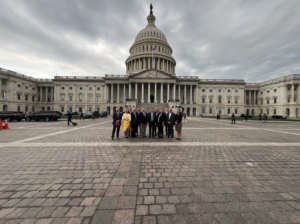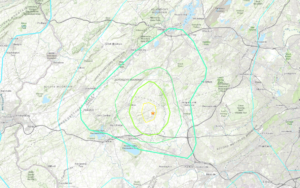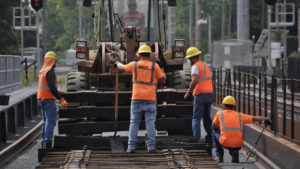ARINC works with D.C. Metro on train system
Written by jroodARINC is helping Washington Metro officials design a new system to avoid rail collisions just weeks after a deadly train crash near the Maryland state line, according to The Capitol in Annapolis, Md. Officials from the Parole-based company said they are providing expertise as its workers develop technologies to position the company as a frontrunner in helping trains everywhere run more safely. That's in response to a federal mandate requiring rail operators to upgrade their systems to help prevent collisions and deaths of railway workers by 2015.
Metro officials are
working with ARINC on a customized system that can track circuit issues in real
time, something the current system cannot do, said Steven Taubenkibel,
spokesman for the Washington Metropolitan Area Transit Authority.
"Something like this
we cannot buy off a shelf," Taubenkibel said. "Whatever the cost,
we’ll find a way to pay for it."
ARINC began working with
Metro after a train slammed into another train stopped on the tracks, a crash
that killed nine people and injured more than 70 others. The cause of the
crash, the deadliest in the rail system’s 33-year history, has not been
determined. But, according to the National Transportation Safety Board, one of
the Metro trains was not identified on a rail control circuit, which caused the
second train to crash into it.
Last month, the board
issued an urgent safety recommendation to the authority that calls for
"enhanced safety redundancy of its train control system." Metro
officials now are waiting for a final report from the board on the cause of the
accident and its recommendations.
Currently, ARINC has a
contract to build Metro’s control center, said John Belcher, chief executive
officer of ARINC. Besides offering its expertise to Metro officials, ARINC also
is developing "positive-rail control" technology, Belcher said.
Positive-rail control is
technology that controls train movements and is designed to prevent train
collisions, derailments, and injuries and deaths of roadway workers, according
to the Federal Railroad Administration.
The federal Rail Safety
Improvement Act of 2008 mandates the "widespread installation" of
positive-train control systems by December 2015.
"We believe with the
mandate of 2015, all of the systems that are in today will have to go to that
route," Belcher said. "We’re going to be the ones to be able to lead
the way."





